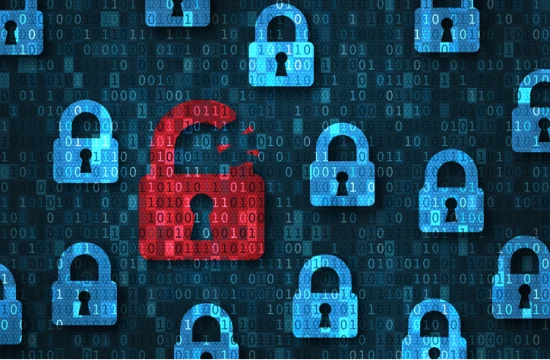Common Types of Online Cybersecurity Threats
Cybersecurity threats come in various forms, each with unique tactics and potential impacts on businesses and individuals. Understanding the most common types of threats is essential for developing robust defenses to protect sensitive data and ensure business continuity. Here are the key types of online cybersecurity threats organizations face today:
- Phishing AttacksPhishing is one of the most prevalent and damaging cybersecurity threats. Cybercriminals use deceptive emails, messages, or websites to trick individuals into revealing sensitive information, such as login credentials, financial data, or personal details. These attacks often mimic trusted entities, making them difficult to detect. Phishing remains a gateway to other threats, such as account takeovers and ransomware infections.
- MalwareMalware, short for malicious software, encompasses a range of harmful programs, including viruses, worms, spyware, and trojans. These programs infiltrate systems to steal data, disrupt operations, or gain unauthorized access to networks. Advanced malware can remain undetected for long periods, causing extensive damage before being discovered.
- RansomwareRansomware has surged as a top cybersecurity threat. This type of malware encrypts an organization’s data, rendering it inaccessible until a ransom is paid. Beyond financial losses, ransomware can disrupt operations, tarnish reputations, and expose organizations to legal consequences if sensitive data is leaked.
- Insider ThreatsInsider threats stem from employees, contractors, or partners who intentionally or unintentionally compromise security. These individuals often have legitimate access to systems, making their actions harder to detect. Insider threats can involve data theft, sabotage, or accidental mishandling of sensitive information.
- Distributed Denial-of-Service (DDoS) AttacksDDoS attacks flood networks, servers, or websites with excessive traffic to overwhelm and disable them. These attacks disrupt normal operations, leading to downtime, financial losses, and reputational harm. Cybercriminals often use botnets—networks of compromised devices—to execute DDoS attacks on a massive scale.
- Zero-Day ExploitsZero-day vulnerabilities are flaws in software or hardware that are unknown to the vendor. Cybercriminals exploit these vulnerabilities before patches or fixes are released, leaving organizations vulnerable to attacks. Zero-day exploits are particularly dangerous because they target unprepared systems.
- Social EngineeringSocial engineering attacks manipulate human psychology to gain unauthorized access to systems or data. Techniques include impersonating trusted individuals, exploiting emotions, or creating a sense of urgency to trick victims into revealing sensitive information. These attacks often bypass technical defenses, highlighting the importance of employee training.
- Advanced Persistent Threats (APTs)APTs are long-term, targeted attacks carried out by highly skilled cybercriminals or state-sponsored groups. These threats aim to infiltrate and remain undetected within a network for extended periods, stealing data or conducting espionage. APTs often involve sophisticated techniques, making them challenging to counter.
- Man-in-the-Middle (MitM) AttacksMitM attacks occur when an attacker intercepts and manipulates communication between two parties. By positioning themselves in the middle, attackers can steal sensitive information, such as login credentials or financial details. These attacks often occur over unsecured networks, emphasizing the need for encryption and secure connections.
Top Strategies to Protect Against Cybersecurity Threats
As cyber threats continue to evolve, organizations must adopt a proactive and multi-layered approach to safeguard their digital assets. Implementing effective cybersecurity strategies helps reduce risks, prevent breaches, and ensure resilience against even the most sophisticated attacks. Here are the top strategies to protect against online cybersecurity threats:
- Implement Multi-Factor Authentication (MFA)Multi-factor authentication (MFA) adds an extra layer of security by requiring users to verify their identity using multiple factors, such as a password, a mobile verification code, or a biometric scan. This significantly reduces the risk of unauthorized access, even if login credentials are compromised.
- Regularly Update and Patch SystemsCybercriminals often exploit unpatched software vulnerabilities to gain access to systems. Regularly updating software and applying security patches is critical to closing these vulnerabilities. Automated patch management tools can help ensure that all systems are consistently up to date.
- Conduct Employee Training and Awareness ProgramsHuman error remains one of the leading causes of cybersecurity breaches. Regular training sessions can help employees recognize phishing attempts, social engineering tactics, and other threats. A well-informed workforce is one of the best defenses against cyberattacks.
- Utilize Endpoint Protection SolutionsEndpoint devices such as laptops, smartphones, and IoT devices are often targeted by attackers. Deploying robust endpoint protection solutions, including antivirus software and endpoint detection and response (EDR) tools, helps monitor and safeguard these entry points from threats.
- Monitor Networks with 24/7 Security OperationsContinuous monitoring of network activity ensures that unusual or suspicious behaviors are detected and addressed promptly. Managed Detection and Response (MDR) services or in-house security operations centers (SOCs) provide real-time visibility and rapid incident response.
- Backup Data RegularlyCreating regular backups ensures that critical data can be restored in the event of ransomware attacks or system failures. Backups should be encrypted and stored securely, with at least one copy kept offline to prevent tampering.
- Implement Least Privilege Access ControlsRestricting user access to only the systems and data necessary for their role limits the potential damage of an insider threat or compromised account. This principle of least privilege minimizes exposure and reduces the risk of data breaches.
- Leverage Threat IntelligenceUsing threat intelligence helps organizations stay informed about the latest attack trends, tactics, and vulnerabilities. Integrating this intelligence into your cybersecurity strategies enables proactive defenses against emerging threats.
- Secure Cloud EnvironmentsAs cloud adoption grows, ensuring robust security measures for cloud services is essential. This includes encryption, access controls, and regular audits of cloud configurations to prevent data breaches and misconfigurations.
- Develop an Incident Response PlanAn effective incident response plan outlines the steps to take in the event of a breach. This includes identifying the threat, containing it, mitigating its impact, and recovering affected systems. Regular drills and updates to the plan ensure readiness.
- Invest in Advanced Security TechnologiesTechnologies such as artificial intelligence (AI),machine learning (ML),and behavioral analytics can detect anomalies and identify threats that traditional tools might miss. These advanced solutions provide a proactive approach to cybersecurity.
- Conduct Regular Security Audits and Penetration TestingFrequent audits and penetration testing help identify vulnerabilities in your systems and processes. Addressing these weaknesses strengthens your defenses and ensures compliance with security standards.
The Evolving Nature of Cybersecurity Threats
The cybersecurity landscape is in a constant state of flux, with threats growing more sophisticated and unpredictable every year. As technology advances and digital transformation accelerates, cybercriminals find new ways to exploit vulnerabilities, targeting individuals, businesses, and governments alike. Understanding the evolving nature of cybersecurity threats is crucial for staying ahead of attackers and maintaining a robust defense.
- Increasing Sophistication of ThreatsModern cyber threats are more advanced than ever, often leveraging artificial intelligence (AI) and machine learning (ML) to bypass traditional defenses. Cybercriminals deploy adaptive malware, polymorphic viruses, and AI-driven phishing campaigns that can change their tactics in real time. These evolving techniques make it harder for outdated security solutions to keep up.
- Rise of State-Sponsored AttacksNation-state actors have become significant players in the cyber threat landscape, often targeting critical infrastructure, supply chains, and intellectual property. These attacks are typically well-funded, highly targeted, and involve advanced persistent threats (APTs) designed to remain undetected for extended periods. The geopolitical landscape further fuels the frequency and complexity of these campaigns.
- The Proliferation of RansomwareRansomware has evolved from basic encryption attacks to sophisticated, multi-faceted operations. Modern ransomware groups often combine data encryption with data exfiltration, threatening to leak sensitive information if the ransom isn’t paid. The rise of Ransomware-as-a-Service (RaaS) platforms has also made these attacks accessible to less experienced cybercriminals, increasing their prevalence.
- Exploitation of Emerging TechnologiesAs organizations adopt new technologies such as the Internet of Things (IoT),5G networks, and cloud computing, cybercriminals exploit vulnerabilities in these systems. IoT devices, in particular, are often poorly secured, providing attackers with easy entry points to larger networks. Similarly, misconfigured cloud environments are frequent targets for data breaches.
- Shifting Attack SurfacesThe shift to remote and hybrid work models has expanded attack surfaces, making endpoints, virtual private networks (VPNs),and cloud applications prime targets. Cybercriminals exploit these decentralized environments by targeting weak access controls, outdated software, and unsecured home networks.
- Increased Focus on Supply Chain AttacksSupply chain attacks have become a preferred tactic for cybercriminals seeking to maximize their impact. By compromising a third-party vendor, attackers can gain access to multiple organizations at once. High-profile incidents like SolarWinds have highlighted the critical need for supply chain security.
- Evolving Social Engineering TacticsSocial engineering techniques, such as phishing, pretexting, and baiting, are becoming more personalized and convincing. Cybercriminals use detailed information about their targets, often obtained from social media or breached databases, to craft believable scams that exploit human vulnerabilities.
- Growing Threats to Critical InfrastructureCyberattacks on critical infrastructure, including energy grids, transportation systems, and healthcare facilities, are on the rise. These attacks can disrupt essential services, endanger lives, and create widespread panic. As critical systems become more interconnected, their vulnerability to cyber threats increases.
- The Role of AI in Cyber ThreatsWhile AI and ML enhance cybersecurity defenses, they are also being weaponized by cybercriminals. AI-powered attacks can identify and exploit vulnerabilities faster, generate convincing phishing messages, and bypass traditional security measures. This dual use of AI presents a significant challenge for cybersecurity professionals.
- Regulatory Pressure and Compliance ChallengesAs governments and industries impose stricter cybersecurity regulations, organizations must adapt to meet compliance requirements. However, failure to do so can expose them to fines and legal consequences, in addition to increased vulnerability to threats.






